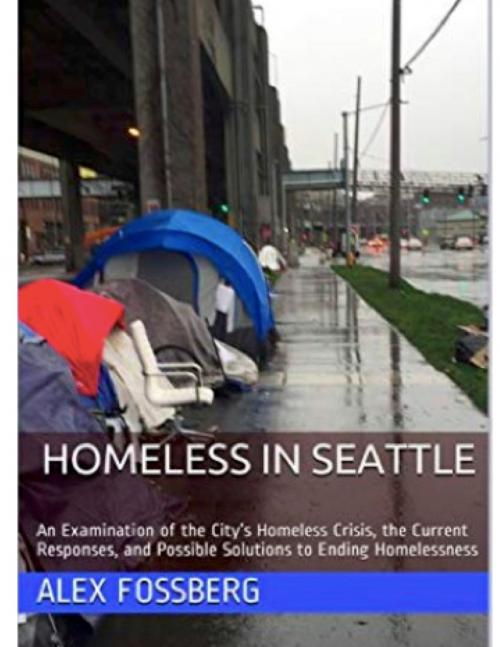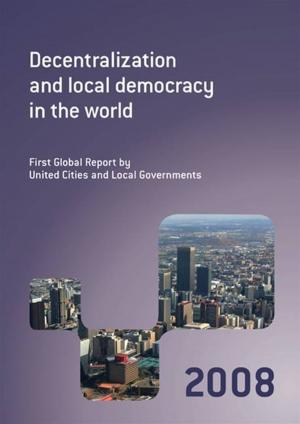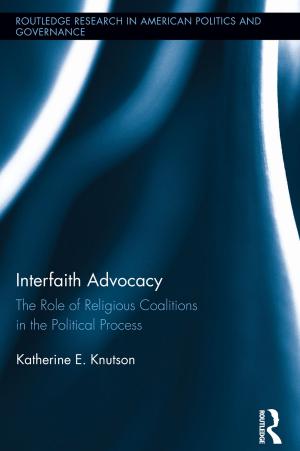Homeless in Seattle
An Examination of the City’s Homeless Crisis, the Current Responses, and Possible Solutions to Ending Homelessness
Nonfiction, Social & Cultural Studies, Political Science, Politics, Social Services & Welfare, Current Events, Government, Local Government| Author: | Alex Fossberg | ISBN: | 1230002501994 |
| Publisher: | Alex Fossberg | Publication: | August 26, 2018 |
| Imprint: | Language: | English |
| Author: | Alex Fossberg |
| ISBN: | 1230002501994 |
| Publisher: | Alex Fossberg |
| Publication: | August 26, 2018 |
| Imprint: | |
| Language: | English |
Seattle is currently experiencing a humanitarian crisis. More than ten thousand people live on the streets of the city as homeless individuals and their numbers continue to rise. In order to understand the crisis, an examination of the make up of the homeless population needs to be done in combination with studying the reasons for why individuals and families become homeless. It is necessary to recognize that some sections of the population are much more at risk for homelessness, including members of the Lesbian, Gay, Bisexual, Transgender and Queer (LGBTQ) community, veterans, youth, and victims of abuse among many others. One section of this work will focus on a direct examination of the downtown core of the city with a walk through of the main areas where homelessness can be most evident in Seattle, while the city’s Point in Time Count will provide a detailed breakdown of this population as recorded on a specific day in time.
While Seattle and King County have made various efforts to battle homelessness and the city has spent a great deal of money on programs and policies directed at combatting homelessness, multiple factors have worsened the situation. These factors include the explosive development of large sections of the city as a corporate economic boom in the heart of the downtown area has fueled massive job and construction growth resulting in a steep increase in rents and home prices throughout a city that has no effective rent control program. In addition, other larger societal issues such as the lack of access to mental health care, the worsening opioid crisis, and a lack of employment and job training are all contributing to a rise in homelessness, despite the current economic boom in Seattle. This work will explore the city’s efforts at tackling homelessness along with the make up of the homeless population and the reasons for how many found themselves in their difficult condition along with examining the reasons why the situation continues to deteriorate despite large amounts of money already being spent on the issue by a multitude of organizations.
In this work, resources will be drawn from mainstream newspapers, magazines, books, television and online publications, as well as the views of some social work proponents. The Point In Time Count will be used alongside the direct walk through of the city in an attempt to better understand those in Seattle’s homeless community. There will also be an effort made to use differing resources and drawing from what has been dubbed the “mainstream liberal media” or Left-leaning sources but also to see the views and opinions of more business and often Right-leaning focussed publications as well. Through a clear examination of the homeless crisis, including the homeless population itself, the causes that led them to lose their housing, and the current and possible expanded efforts to fighting the crisis, a possible way to solve the homeless crisis will be shown within a set time line and budgetary framework, paving the way for moving the homeless into humane housing while also working to prevent others from losing their housing in the first place, thus preventing further increases in homelessness.
Seattle is currently experiencing a humanitarian crisis. More than ten thousand people live on the streets of the city as homeless individuals and their numbers continue to rise. In order to understand the crisis, an examination of the make up of the homeless population needs to be done in combination with studying the reasons for why individuals and families become homeless. It is necessary to recognize that some sections of the population are much more at risk for homelessness, including members of the Lesbian, Gay, Bisexual, Transgender and Queer (LGBTQ) community, veterans, youth, and victims of abuse among many others. One section of this work will focus on a direct examination of the downtown core of the city with a walk through of the main areas where homelessness can be most evident in Seattle, while the city’s Point in Time Count will provide a detailed breakdown of this population as recorded on a specific day in time.
While Seattle and King County have made various efforts to battle homelessness and the city has spent a great deal of money on programs and policies directed at combatting homelessness, multiple factors have worsened the situation. These factors include the explosive development of large sections of the city as a corporate economic boom in the heart of the downtown area has fueled massive job and construction growth resulting in a steep increase in rents and home prices throughout a city that has no effective rent control program. In addition, other larger societal issues such as the lack of access to mental health care, the worsening opioid crisis, and a lack of employment and job training are all contributing to a rise in homelessness, despite the current economic boom in Seattle. This work will explore the city’s efforts at tackling homelessness along with the make up of the homeless population and the reasons for how many found themselves in their difficult condition along with examining the reasons why the situation continues to deteriorate despite large amounts of money already being spent on the issue by a multitude of organizations.
In this work, resources will be drawn from mainstream newspapers, magazines, books, television and online publications, as well as the views of some social work proponents. The Point In Time Count will be used alongside the direct walk through of the city in an attempt to better understand those in Seattle’s homeless community. There will also be an effort made to use differing resources and drawing from what has been dubbed the “mainstream liberal media” or Left-leaning sources but also to see the views and opinions of more business and often Right-leaning focussed publications as well. Through a clear examination of the homeless crisis, including the homeless population itself, the causes that led them to lose their housing, and the current and possible expanded efforts to fighting the crisis, a possible way to solve the homeless crisis will be shown within a set time line and budgetary framework, paving the way for moving the homeless into humane housing while also working to prevent others from losing their housing in the first place, thus preventing further increases in homelessness.















